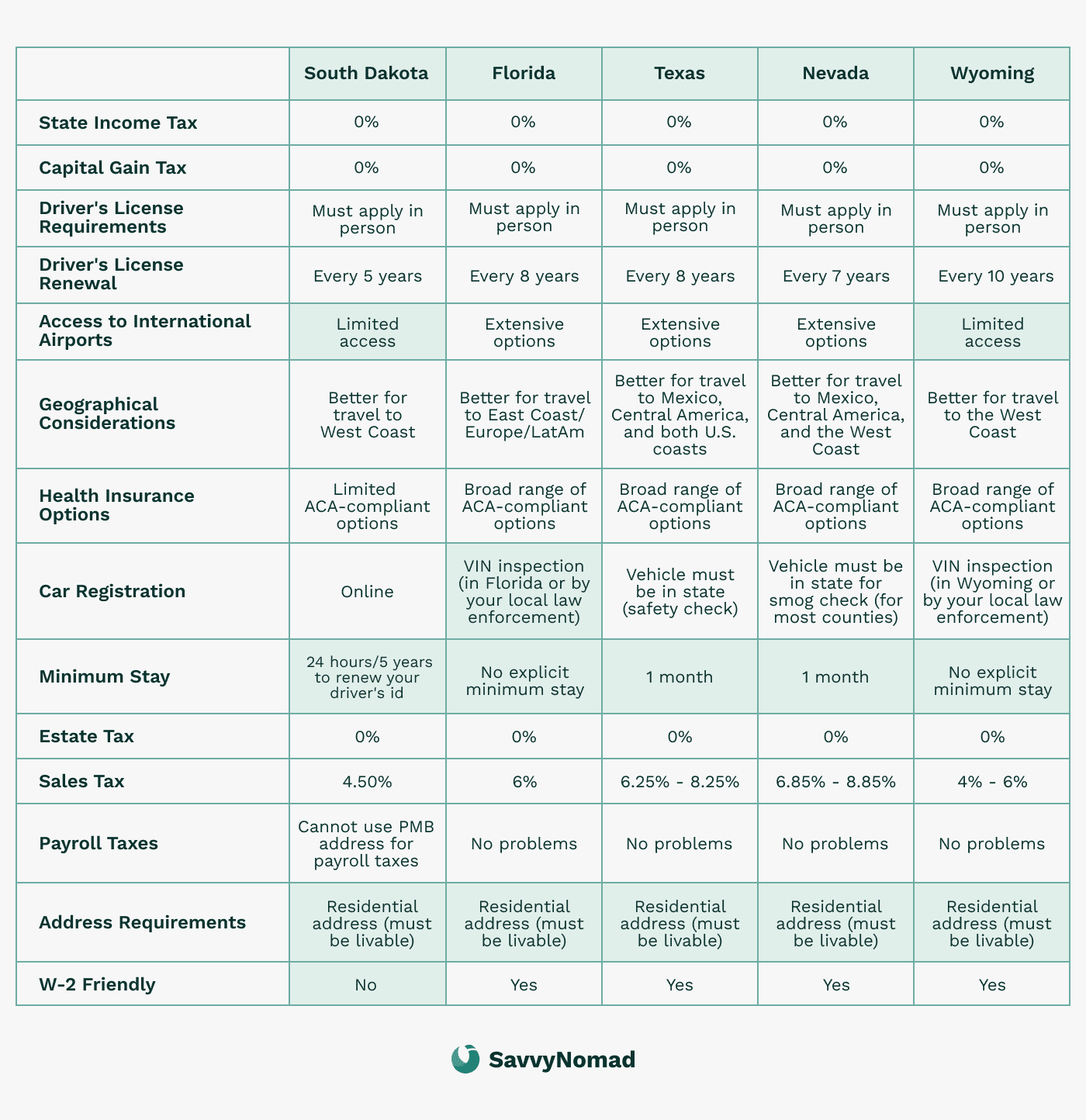How to leave Kansas residency?

Leaving Kansas residency can offer new opportunities, whether you’re moving for a new job, lower taxes, or retirement.
This guide will help you establish a new domicile, cut ties with Kansas, and manage any Kansas-sourced income after your move.
Step 1: Establish a new domicile
When you leave Kansas residency, the first thing you need to do is establish your new permanent home in another state. Moving physically is important, but it’s just the beginning.
You’ll also need to make sure you officially show your new state as your permanent residence by taking a few crucial steps.
Here’s how to do it:
1) Establish new residency
- Secure a residential address:When moving to a new state, it's important to find a place to live, whether you decide to rent or buy a home. Some states, such as Florida, offer tax benefits like the homestead exemption, which can reduce your property taxes. It's crucial to establish a permanent residence in your new state as proof that you have left Kansas.
Acceptance always depends on each institution’s own policies, and the service itself does not provide tax, legal, or investment advice.
- File a Declaration of Domicile: Some states allow you to file a Declaration of Domicile to formally state that you now live there. This legal document can help reinforce your move, especially in states like Florida.
Residency guides:

2) Relocate your belongings
Moving personal items like your furniture, vehicles, and other household possessions to your new state shows that you are serious about making it your permanent home.
3) Spend time in your new state
Spending a significant amount of time in your new state indicates that you have truly relocated. Make sure you are spending more time there than in Kansas to avoid any confusion about your primary residence.
4) Transfer IDs and vehicle registrations
Transfer your driver’s license and vehicle registration to your new state. This is a key step in showing that you’ve established permanent residency.
5) Register to vote (if eligible)
If you are eligible to vote in your new state, you may update your voter registration there and follow the official process to cancel your Kansas registration. Registration and voting in your new state can be a supporting indicator of domicile, but it is not determinative on its own.
For questions about where you are legally allowed to register and vote, rely on guidance from state and local election officials, and never vote in more than one state for the same election.
6) Update financial accounts
Notify your bank, credit card companies, and other financial institutions of your new address. Keeping all your financial documents up to date with your new residency helps confirm your move.
7) Notify your employer
Let your employer know about your new address so they can update your payroll and tax withholdings to your new state. This can help reduce the chance that Kansas state income tax continues to be withheld after your move.

Step 2: Sever ties with Kansas
Once you’ve moved to a new state, the next step is to officially end your ties with Kansas, which can reduce the chances that you will be treated as a resident for tax purposes and strengthen your position if your status is ever reviewed.
Here are the key steps you need to take:
1) Close Kansas financial ties
- Close local bank accounts: If you have any bank accounts or financial assets based in Kansas, consider closing them or transferring the funds to banks in your new state. This shows that your financial life is now centered in your new state, not Kansas.
- Update personal records: Update your address with the IRS, Social Security, and any other relevant entities. Keeping all personal and financial records in your new state helps solidify your move.
2) Sell or lease property
If you own property in Kansas, selling it is a strong indication that you are no longer a resident. If selling isn’t an option, leasing the property long-term can also help demonstrate that you no longer live there.
3) Cancel local subscriptions/services
Make sure to cancel any subscriptions or memberships tied to Kansas, such as gym memberships, utilities, or local services. Keeping these active could suggest that you still have ties to the state.
4) Transfer healthcare and insurance
Move your healthcare services and providers to your new state. Transferring these essential services further strengthens your case that your daily life is now based elsewhere.

Step 3: Time spent outside Kansas
After you move to your new home and cut ties with Kansas, it's crucial to monitor the amount of time you spend in the state to prevent being classified as a resident for tax reasons.
Kansas looks at both your domicile (where your permanent home is) and how much time you spend in the state when deciding whether you’re a resident for tax purposes. Under Kansas law, if you spend in the aggregate more than six months (about 183 days) in Kansas during a tax year, you are presumed to be a Kansas resident unless you can prove otherwise.
183-day rule
- What is the six-month / 183-day rule?: If you spend more than six months (about 183 days) in Kansas during a tax year, you may be presumed to be a resident for tax purposes, even if you have moved to another state. This presumption can be challenged, but the burden is on you to show that Kansas was not your domicile.
- Practical target (but not a guarantee): As a practical rule of thumb, many people who are trying to leave Kansas residency aim to keep their time in Kansas under about six months each year and clearly show that their main home and life are now based in another state. Being under this threshold does not automatically make you a nonresident if Kansas is still your domicile, and time in the state can add up quickly through short visits.
Keep detailed travel records
- Why it’s important: If your residency status is ever questioned, having detailed records of your time spent in and out of Kansas will help show how much time you actually spent in the state and support your position about where you are a resident.
- What to track: Save flight tickets, hotel receipts, and other travel documents showing when you entered and left Kansas. Having a detailed log of your movements will be helpful if Kansas’s Department of Revenue ever audits your residency status.
Step 4: Kansas-sourced income
Even after leaving Kansas, you may still have income connected to the state, such as rental or business income. It’s important to handle Kansas-sourced income correctly to stay compliant with state tax laws.
Here’s how to handle Kansas-sourced income once you’ve moved:
1) Ongoing tax responsibilities
- File non-resident tax returns: If you continue to earn income from sources within Kansas, such as rental properties or businesses, you may need to file nonresident Kansas tax returns. Filing as a nonresident generally means Kansas taxes only your Kansas-sourced income, while income from your new home state is taxed under that state’s rules. Because sourcing can be complex, especially if you work remotely or own a business, it’s wise to get professional advice.
- Tax on Kansas-sourced income: Even though you are no longer a resident, Kansas still has the right to tax income generated within the state. This could include wages earned in Kansas, rental income, or profits from Kansas-based businesses.
2) Rental or business income
If you own a rental property or a business in Kansas, any income generated from those sources may still be subject to Kansas state taxes. It’s important to consult with a tax professional to ensure compliance with Kansas tax laws, especially if complex income streams tie back to the state.





